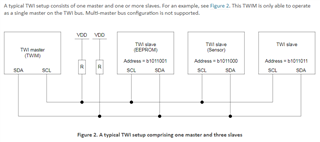Hi,
I have a situation where I have to create 4 TWIS instances on nRF52832.
sdk_config.h only shows 2 TWIS instances.
// <q> TWIS0_ENABLED - Enable TWIS0 instance #ifndef TWIS0_ENABLED #define TWIS0_ENABLED 0 #endif // <q> TWIS1_ENABLED - Enable TWIS1 instance #ifndef TWIS1_ENABLED #define TWIS1_ENABLED 1 #endif
Is it ok if I add other instances (TWIS2_ENABLED and TWIS3_ENABLED) in sdk_config myself (haven't tried it yet)
If not, how can I access 4 TWIS devices if I only create 1 instance of TWIS?



